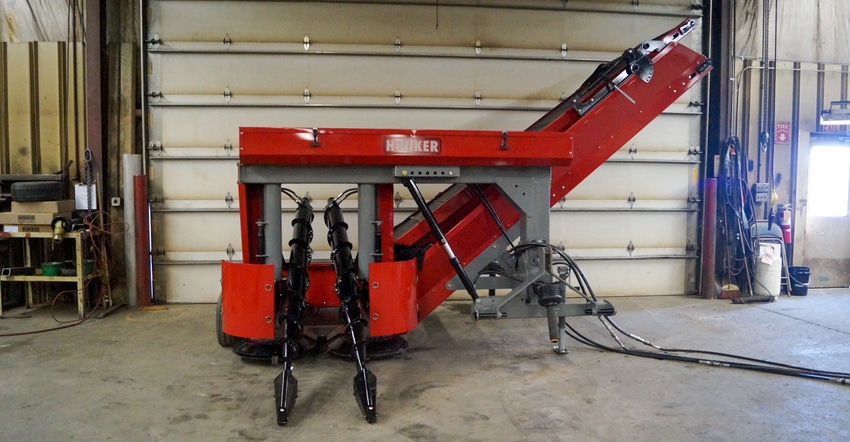
Fifty years ago, the Hiniker Co. started making tractor cabs for big machinery companies.
In fact, you’ll likely see their cabs out there on some older-model John Deere tractors or other machines.
The company has evolved over the years, focusing less on cabs and developing products for more niche farming applications, like cultivators, strip-till equipment and one of the industry’s only cover crop interseeders.
Now, the company is targeting the growing hemp market with its now-available Hemp Harvester.
A prototype of their single-row machine was taken to large farm shows last year, including the Farm Progress Show in Decatur in August. It’s been refined since then with improvements the company hopes will interest CBD (cannabidiol) growers looking for a better way to harvest plants at the end of the season.
From three rows to one
Matt Morrison, director of sales and marketing for Hiniker, says the company initially got into the hemp business by rolling out a three-row unit with two conveyors. The idea, he says, was that CBD growers were looking for a machine that would quickly harvest the plants and cut down on the labor costs of getting plants out of the field.
But farmer feedback showed a different need: flexibility. There is no uniform row spacing for CBD hemp plantings, he says, and farmers wanted the flexibility to go for narrower spacings with a machine that could accommodate that.
“People just don't really know," Morrison says. “There isn't just a set row spacing out there, but the row spacing is getting more narrow.”
Adjustable augers pull the hemp plants into two 27-inch diameter PTO-driven rotary cutters. Floating ground-supported skids provide for a low plant cut height.
A 42-inch-wide hydraulic conveyor system keeps plants moving up the belt. The upper-row pinch conveyor holds the plants before they are ejected into a truck or wagon.
It’s a big change from the previous design that utilized a simpler conveyor but couldn’t effectively hold the round hemp plants on the belts before being ejected into a truck. The previous design also featured steel conveyors, but this ended up driving up the cost. Now, the conveyor system is rubber.
So, how many plants can it harvest at a time? That depends, he says. The machine is designed to go up to 5 mph pulled by a minimum 150-hp tractor.
“We foresee this one being for the smaller farmer, at least for the next couple of years," he says.
Stripper is next
As the grower market for hemp, especially CBD, starts winnowing out, remaining growers are likely to increase their acreage. This will present a need for a machine that will not only cut the plants, but also strip them in the field.
The company is already working on a pull-type hemp stripper that can strip the leaves and buds in the field and convey them into a transport wagon.
As for the harvester, the list price is $45,000 and is available right now.
Morrison says the company has been testing and marketing the machine in the Midwest, especially Kentucky where it’s been tested on several farms.
He says the company will focus on marketing the harvester on the East Coast this summer.
Watch the video below to see the Hiniker Hemp Harvester in action:
</div>
About the Author(s)
You May Also Like






